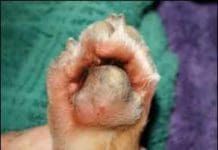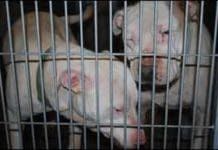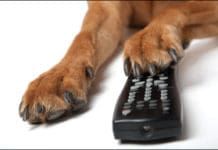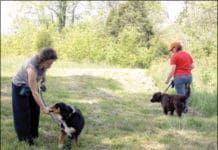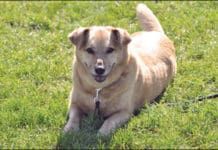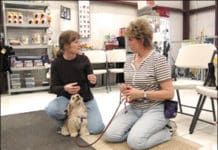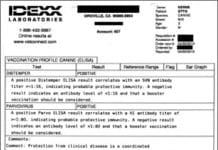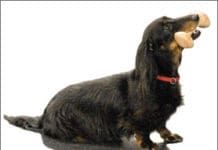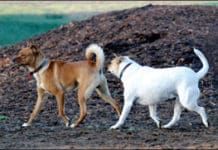Home Search
raw%20dog%20food - search results
If you're not happy with the results, please do another search
Diagnosing and Treatment Options for Symmetrical Lupoid Onychodystrophy or SLO
Dog nails aren’t supposed to fall off, thought first-time dog owner Terrie Huberman some 18 months ago. That’s when she first realized that finding one of her Pug-Poodle mix’s nails on the floor of her Sherman Oaks, California, apartment wasn’t an isolated incident. It all started when, after coming in from a walk, Terrie picked up what would turn out to be the keratin shell from one of Bonzo’s claws. At the time she thought it was something he’d tracked in from outside. Only later did she learn the shell was a telltale sign of Symmetrical Lupoid Onychodystrophy, SLO for short.
Identifying and Treating Skin Conditions that can Affect Your Dog
Yikes! What happened to Fido’s nose? And what’s wrong with Fluffy’s paw pads? The possibilities are many, and a surprising number of nose and paw pad problems are related. Because illnesses in this category often have similar or identical symptoms, a veterinarian’s diagnosis can be important. The following overview will help you identify, prevent, or treat these disorders. The most frequently asked questions about dogs’ noses concern color. Dogs have black or dark noses and paw pads because of melanin, a pigment that darkens skin. When melanin production slows or stops, the skin lightens uniformly or in patches. The term nasodigital refers to both nose and toes. A thickening of the outer layer of skin (hyperkeratosis) at the edges of the nose or paw pads can develop into painful cracks, fissures, erosions, and ulcers.
Why are so many abused dogs so forgiving?
I was in my local shelter one day last week when a couple brought in two intact male pit bull-type dogs. Both dogs were white, which made it easy to see how filthy dirty they were – and to see the wounds that each of them had. The larger, overweight dog had what may have started as a sunburn and developed into a dermatological condition. But the younger, smaller dog had truly ghastly wounds on his hind legs; it looked as if he had been tied up (or even hung) by ropes around his hind legs.
What’s The Best Dry Dog Food for Your Dog?
How should you select the right dog food for your dog? Over the years, we've spoken to literally thousands of dog owners and industry experts and they have at least a few hundred different approaches to the task. We'll briefly discuss some of the most prevalent factors used by owners to support their dog food buying decisions and then we'll tell you how we recommend choosing your dogs' food.
Blood Transfusions for Dogs
Denise Mankin, DVM, was on duty late one night in a Des Moines, Iowa, emergency veterinary clinic when Yeller, a Labrador Retriever, was rushed in sporting a fresh wound to his back. Yeller had been shot after escaping from his rural home. After stabilizing Yeller with IV fluids, antibiotics, and pain medications, Mankin opened up the dog's abdomen to find blood filling his abdominal cavity. A bullet had perforated Yeller's small intestine in five different locations, and two of the sites were hemorrhaging profusely. Within moments, his blood pressure plummeted. As Mankin worked desperately to tie off the blood supply to his damaged bowel, Yeller went into cardiac arrest. Cardiac drugs restored Yeller's heart beat, and donor blood, having been warmed for transfusion, was pumped into him.
Does Your Dog Bark at the TV?
Our Corgi, Lucy, barks at the television. Not only does she bark at dogs, she may also bark at horses, giraffes, cartoon hippopotami, and any other animal or ersatz animal, as well as menacing human figures. It's at least a little annoying, if not irritating. Given her herding-dog Type-A control-freak personality she may always be somewhat prone to respond to television stimuli, but we've made a lot of progress using several of these tactics.
Understanding Aggression in Dogs
Aggression. It's a natural, normal dog behavior, but it's also a scary word that evokes images of maulings and dog-related fatalities. The term aggression" actually encompasses a long continuum of behaviors
How To Find The Best Dog Trainer For Your Dog
People have many questions when it comes to dog training: Lure-reward training or clicker training? Group classes or private lessons? Basic obedience or beyond? What type of trainer is best for dealing with your dog's behavior challenges? Finding the right trainer is an important piece of the training puzzle. Dog training is an unregulated industry; anyone can hang up a sign and instantly become a dog trainer. If you mix some decent Web-authoring skills with a college-level book on public relations, even yesterday's Fed-Ex clerk can have the Web presence of a seasoned dog training professional.
Beware of Over-Vaccinating Your Dog
In Whole Dog Journal's opinion, annual vaccination for most canine diseases is unnecessary and potentially harmful. Dog owners should avoid employing those old-fashioned veterinarians who recommend annual vaccines. Owners should also avoid those veterinary service providers who provide inexpensive vaccines and other routine care without the benefit of a relationship with you and your dog beyond a brief transaction in a parking lot or pet supply store.
Canine Sports: Competitive Obedience
You could hear a pin drop. The bleachers and chairs are jammed with an audience holding its collective breath as the handler-dog team on the floor completes their final exercise in the American Kennel Club's (AKC) National Obedience Invitational, an annual event that tests the best in the sport. The team that wins this final round has competed for several days in multiple classes, demonstrating the mental and physical stamina, as well as the training chops
Detecting Canine Anal Sac Problems
Anal sacs are located on either side of your dog’s anus, between the external and internal sphincter muscles. Depending on the dog, they range in size from that of pea to a lima bean. Sebaceous glands within the lining secrete a foul-smelling liquid. Under normal circumstances, the sacs empty on their own during bowel movements via a pair of ducts. This natural, routine emptying serves as a means of olfactory communication and establishing territory. Each dog possesses his own unique scent, which is why ritualized dog-to-dog greetings include copious rear-end sniffing. When a dog presents his rear for information gathering, the muscle movements involved in raising the tail apply pressure to the sac, prompting the release of additional scent.



